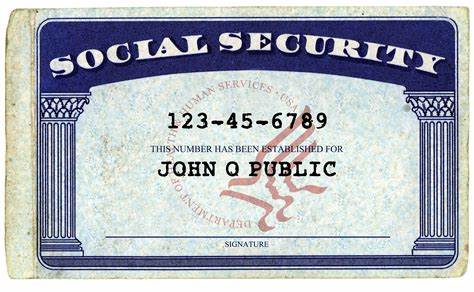What Is The Minimum Social Security Benefit?
With millions of Americans reliant upon Social Security payments in their retirement years it is important to understand how Social Security works. Some of these Americans rely entirely on this income while most others rely at least partially on this income.
You may already have some idea how this whole system works but in this post we will look more deeply into Social Security and find out the minimum amount paid as a Social Security benefit.
What Is Social Security?
The Social Security Administration (SSA) is an independent government agency which is part of the U.S. federal government. This agency administers Social Security payments for retirement, disability and survivor benefits.

In order to qualify for these payments workers in the United States contribute to a central fund through Social Security taxes. These taxes are taken from an individual's paychecks based on the person's Social Security number. This nine digit Social Security number uniquely identifies an individual and also authorizes them to hold legal employment in the United States.
Most of the Social Security benefits programs require an individual to have paid into this tax fund or to be the spouse of someone who has. There some programs however that do not require you to have paid into the system such as the Supplemental Security Income program.
What is The Minimum Social Security Benefit?
As of 2022 the lowest available Social Security benefit according to the SSA is $45.50 a month. This is based on 11 years of work coverage and taking retirement at age 62. In contrast, with 30 years of coverage the minimum monthly benefit is $950.80.
This 30 years of coverage is also dependent on the beneficiary staying in employment until the full retirement age of 70. If that same worker with 30 years retired 8 years sooner their benefit would be as low as $665.56.
How Are Social Security Benefits Calculated?
The method used by the Social Security Administration to calculate retirement benefits is very complicated. I will do my best to explain it here although there are online calculators on the Social Security Administration website that help you do your personal calculations based on your actual account.

When calculating your Social Security benefits they look at your 35 highest earning years. This is the first step in determining your primary insurance amount (PIA). Using these 35 years or however many you have you first need to establish your average indexed monthly wage (AIME).
Taking your annual income for each of the years and using Social Security index tables to adjust for inflation, you add them all together. This total is then divided by 420 which is the number of months in 35 years. If you only have 11 years of work then you adjust to the number of months in 11 years.
This calculation will give you the average monthly amount you made in your top earning years or AIME.
The next step is to take this AIME and introduce bend points. This allows you to calculate your primary insurance amount (PIA). It will be the sum of 90% of the first $1,024 of your AIME plus 32% of your AIME from $1,025 and $6,172 plus 15% of any AIME that is over $6,172.
This above sum will calculate your PIA but this also has to go through further calculations to get a final amount. The PIA then may need to be adjusted based on your retirement age. Starting retirement at 62 will decrease your benefits. If you wait until 70 to retire then you get the maximum possible benefits based on age.
Once the benefit amount is determined there may be sporadic cost of living adjustments that apply annually. This is so that the benefits can keep pace with changes in inflation.
How Does Low Income Affect PIA?
Those individuals with a limited work history or generally low incomes will usually receive a low PIA that is usually well below the poverty limit. It is for this reason that low income earners have their Social Security based on the number of years that they qualified for Social Security.
The Social Security Administration publishes Special Minimum Benefit tables which list monthly benefits based on years of qualified work history.
What Is the Minimum Social Security Benefit at Age 62?
The earliest U.S. Social Security beneficiaries can retire is at the age of 62 and if they choose to do so they will receive the minimum benefits for which they are eligible. As of August the average income from Social Security is $1657 a month. There are many people who make far less than this amount.

Individuals for whom the Special Minimum Benefit calculation is used do not get an increase in benefits by waiting until the age of 70 to retire. However, starting the benefits early will still cause a decrease and could lead to benefits as low as $31.85 a month.
Those who have an extensive work history and contribute well to Social Security taxes will have much higher benefit amounts. No matter how much those payments are, however, they will always fall below the poverty line.
How Do You Qualify for Social Security Benefits?
The Social Security benefits system works on credits. The average person might accrue around 4 credits a year and it requires 40 credits total to qualify for retirement benefits. As of 2022 you would need to earn at least $1510 in a quarter to equal one credit.
Based on $1510 the minimum you can earn in 2022 to earn all four credits would be a little over $6000. Obviously in previous years the amounts would have been lower meaning you could earn credits more easily.
Once you have accrued 40 lifetime points you qualify for Social Security benefits once you reach the age of 62. The more credits you accrue over the years the higher your monthly benefit payments will be. If the credits are from your own work history this makes you the primary beneficiary.
Certain family members such as spouses can become eligible for Social Security benefits based on your accrued credits. They may not have accrued any or enough credits to qualify themselves but they can get the benefits through you.
A spouse can claim spousal benefits which will generally equal 50% of what you are making from your pension. If they outlive you they become eligible for survivor benefits and would receive 100% of the amount you formerly made.
Those who qualify for Social Security by reaching 40 credits will automatically be eligible for Medicare when they reach 65. If you are already collecting retirement benefits at that time you will automatically enroll in Medicare.
Can You Get Social Security if You Never Worked?
As the Social Security system is a credit based benefit you can not qualify for benefits yourself if you have never worked or paid Social Security taxes. This does not mean you can not qualify but it does require that your spouse qualifies for Social Security.
If your spouse receives Social Security retirement you can apply for spousal benefits which will amount to 50% of the amount that they earn monthly.
Conclusion
Social Security benefits are dependent upon work history and how much has been contributed to the Social Security taxes by the individual. The benefits received can range from around $31 to $4,195 a month.
There are many factors involved in calculating your Social Security benefits which make it very complicated. In order to qualify for Social Security you must either have a significant work history or be married to a person whose work history qualifies for the benefits.
Reference SSA Locator
If you use any of the forms, definitions, or data shown on SSA Locator, please make sure to link or reference us using the tool below. Thanks!
-
<a href="https://ssalocator.com/blog/what-is-the-minimum-social-security-benefit"> What Is The Minimum Social Security Benefit?</a>
-
" What Is The Minimum Social Security Benefit?". SSA Locator. Accessed on December 21, 2025. https://ssalocator.com/blog/what-is-the-minimum-social-security-benefit.
-
" What Is The Minimum Social Security Benefit?". SSA Locator, https://ssalocator.com/blog/what-is-the-minimum-social-security-benefit. Accessed 21 December, 2025
-
What Is The Minimum Social Security Benefit?. SSA Locator. Retrieved from https://ssalocator.com/blog/what-is-the-minimum-social-security-benefit.